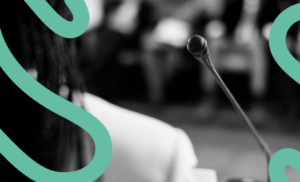In the world of digital marketing, there are concepts that mean very different things depending on the interest of those who invoke them. One is engagement, which for some professionals is not a representation of affinity with a brand, but has become a yardstick. Thus, they dare to talk about the number of engagements they achieve with a content action, although it is not very clear what that means or what information it provides. Another term that goes along the same lines is follower. Just a decade ago, a follower was the golden nugget in the riverbed, something of extreme value, difficult for a company to win, that could only bring profit. This is not the case today, but there are even those who, having had them for the worse, see them in a positive light.
The follower has ceased to be the fan to the point that even Facebook differentiates between one and the other. The former watches you; the latter “just” appreciates you. Perhaps the two are sometimes the same person, but this is not always the case.
The nuances of the follower
It is increasingly common for followers to be behind a brand not out of affinity, but out of curiosity, practical interest or, in the worst case scenario, iniquity. Hay seguidores tóxicos, como los stalkers. More than following, the stalker pursues: he investigates us, finds out our connections with other profiles on social networks, reconstructs our life and uses it to draw conclusions, send us uncomfortable messages and even threaten us. There are critical followers, who do not feel a special appreciation for the company, but who become a member of the digital community because it is the way they have found to question us, complain and claim their rights. As we activate barriers to control the level of social media anger, we contribute to transforming the value of the follower. One way to do this is, for example, by blocking who can reply to a tweet depending on whether we let them be part of our group of followers or not, or whether we mention them in the conversation.
There are critical followers who become a member of the digital community because it is the way they find to claim their rights.
The follower as a metric of value
In the early days when the current ecosystem of digital platforms was being cooked up, the follower was the main measure of a profile’s success. “How many do you have?”, we asked each other. The premise seemed obvious: the more followers, the more potential reach our publications will have. Without spectators, there is no impact and no ability to influence.
However, more followers does not mean more success. Today it may be just the opposite. About a year and a half ago, at an industry event, I heard a leading expert say that the numerous reviews his company was receiving across all the platforms it was present on was positive because it meant that its followers “were authentic”. Let them speak ill of them, as long as they are not bots. Of course, he who is not consoled is because he does not want to be.
For some, it’s a good thing that followers speak ill of them, as long as they are not bots.
Because that’s another problem: in many cases, the followers are outright fakes. The sophistication of the networks has led to a process of generating fake profiles that copy human behaviour so as not to be eliminated in the regular cleaning processes of environments such as Twitter, Facebook or Instagram. Their existence is marketed to launch reputational attacks and advocacy or smear campaigns, which seek to simulate popular support for measures or states of opinion that, in reality, have no popular basis. It is astroturfing, more fake than the fake grass that gives its name to the term. “Monkey see, monkey do”, say the British. “Culo veo, culo quiero”, (“Butt I see, butt I want”,) we say in Spain.
He who has a follower does not have a treasure. He has eyes, virtual or not, on his neck. Their digital value will depend, as always, on their reactions and the implications they end up having.










